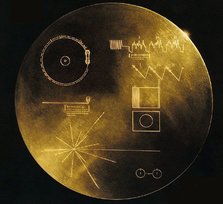Space object velocity
It calculates the circular orbital velocity, escape velocity and planetary system escape velocity for the given planet parameters.
Since ancient times, people have tried to imagine how our world works.
Aristarchus of Samos was an ancient Greek philosopher. In early III b.c. he suggested a heliocentric world model (the Sun in the center). He also tried to calculate Earth and Sun's sizes and the distance between them using the Moon position. Many opposers were standing for the geocentric system (the Earth in the center), so the heliocentric idea did not get much follow-up.
It took almost two thousand years to recover it. Nicolaus Copernicus, the Polish astronomer, reformulated the model of the universe with Sun in the center. The work of his whole life was published in 1543, the year of his death. Copernicus heliocentric model and tables of planetary positions more accurately reflected the observed state.
A half-century later, in 1609, Johannes Kepler, a German mathematician, published planetary motion laws, which improved the Copernicus model's accuracy. Kepler created his laws due to the analysis of a big amount of data, carefully collected by Tycho Brahe, a Danish astronomer.
The end of the 17th century was marked by the great English scientist Isaac Newton's discoveries. Newton's motion laws and universal gravitation law provided the theoretical basis and extended Kepler formulas.
Finally, in 1921, Albert Einstein issued the general theory of relativity (GTR), which describes gravity phenomena and planetary motion mechanics with the highest accuracy. In most cases, relativistic effects can be ignored, and Newton's classical laws give a fairly accurate planet motion description. So thanks to Newton and his predecessors, now we still can calculate:
- the circular orbital velocity of a satellite object (first space velocity)
- the speed of an object to escape off-planet gravitation (second space velocity)
- the speed of an object to escape planetary system gravitation (third space velocity)
using very simple formulas.
Circular orbital velocity
Circular orbital velocity is the speed required to keep circular object motion at a specified altitude above the planet.
The equation is: ,where
R=r+h - orbit radius, combined by r -planet radius and h - altitude above the planet
M - planet mass
G - gravitational constant 6.67408(31)10-11 m³/(s²·kg)
The formula can be easily derived from Newton's gravitation force formula and centrifugal force formula:
m -object mass (excluded, during evaluation of v1)
Two and half centuries later, after Newton's discoveries, in 1957, USSR launched the Earth's first artificial satellite. R-7 carrier rocket overcame the atmosphere resistance and the Earth gravity to deliver Sputnik-1 to the 577-km orbit.
Escape velocity
is a speed required to escape the gravitational influence of the planet or star.
The formula is:
It correlates with v1 as follows:
The formula can be derived from the kinetic energy and Mechanical work done to overcome the gravity moving object from the initial altitude to infinity:
In 1959 USSR launched Luna-1, the automatic interplanetary module, which overcame the influence of the Earth's gravity and became 1st artificial satellite of the Sun.
Planetary system escape velocity
is a minimal speed required to overcome whole planetary system gravity including planet and star gravity.
,
where v - planet orbital speed
v2 - planet escape speed

According to calculations, the unit launched from the Earth must have velocity of 16.6 km/s, to leave Solar system.
The nearest velocity (16.26 km/s) was achieved by the "New Horizons" module launched in 2006 by the USA to research Pluto and Charon, its satellite. Up to date, the module finished Pluto filming; it goes toward the Kuiper belt.
The first world module, which achieves Solar system escape speed, was "Voyager-1", launched by the United States in 1997. Initial "Voyager" speed was lower than "New Horizons" module speed, but due to a series of gravitational maneuvers against Solar system planets, especially Jupiter, the speed rose to 17 km/s. Currently, the "Voyager-1" left the Solar system. It still collects and sends data to the Earth. The unit carries a 12-inch gold plate copper disc containing audio-visual records from the Earth intended for intelligent life forms from other planetary systems.
Sources:
V. Zakharov, The gravitation: from Aristotle to Einstein
Photo of Voyager Record, NASA, Voyager Project.
Comments